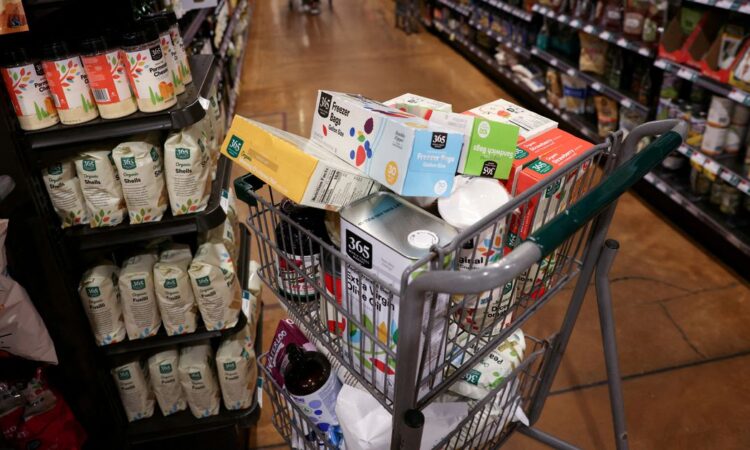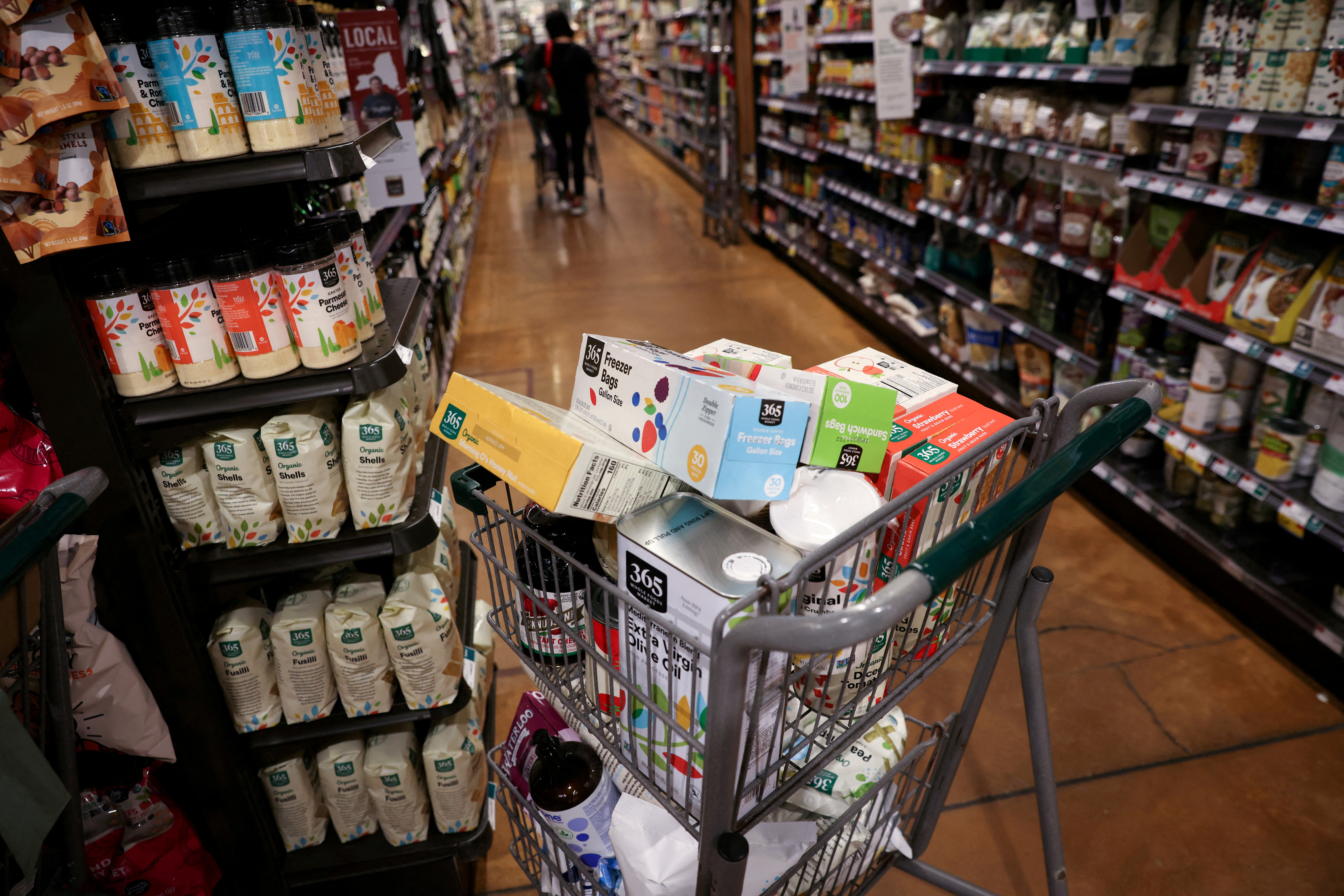

[1/2] A shopping cart is seen in a supermarket in Manhattan, New York City, U.S., June 10, 2022. REUTERS/Andrew Kelly/File Photo
WASHINGTON, May 12 (Reuters) – U.S. consumer sentiment slumped to a six-month low in May on worries that political haggling over raising the federal government’s borrowing cap could trigger a recession.
The University of Michigan’s survey on Friday also showed consumers’ long-term inflation expectations jumping this month to their highest reading since 2011, bad news for the Federal Reserve after it signaled last week that it could pause the U.S. central bank’s fastest monetary policy tightening cycle since the 1980s.
“This report has a bit of a stagflationary feel about it,” said Conrad DeQuadros, senior economic advisor at Brean Capital in New York. “This increase in inflation expectations is likely to add to a spirited discussion about whether to hold or hike again at the June 14 meeting.”
The survey’s preliminary reading on the overall index of consumer sentiment came in at 57.7 this month, the lowest reading since last November and down from 63.5 in April.
Economists polled by Reuters had forecast a preliminary reading of 63.0. The survey’s current economic conditions index fell to 64.5 from 68.2 in April. Its measure of consumer expectations dropped to 53.4 from 60.5 in the prior month.
Surveys of Consumers Director Joanne Hsu partially attributed the deterioration in sentiment to the debacle in Washington and warned that “if policymakers fail to resolve the debt ceiling crisis, these dismal views over the economy will exacerbate the dire economic consequences of default.”
The non-partisan Congressional Budget Office warned on Friday that the nation faced a “significant risk” of defaulting on payment obligations within the first two weeks of June without a debt ceiling increase.
Stocks on Wall Street were trading lower. The dollar rose against a basket of currencies. U.S. Treasury prices fell.
WEAK CORRELATION WITH SPENDING
Some economists cautioned against reading too much into the plunge in sentiment and jump in long-term inflation expectations, arguing that there was no strong correlation with consumer spending.
“We’ve seen consumer sentiment sink often since COVID scrambled the economy, but consumer spending has risen and now maintains a healthy level,” said Robert Frick, corporate economist with Navy Federal Credit Union in Vienna, Virginia.
“As for inflation, everyone is poor at predicting it long term, including consumers, and inflation expectations have little effect on spending decisions anyway.”
The survey’s reading of one-year inflation expectations dipped to 4.5% this month after vaulting to 4.6% in April. Its five-year inflation outlook rose to 3.2%, the highest reading since 2011, from 3.0% last month.
A surge in inflation expectations once forced the Fed to deliver a big rate hike. The U.S. central bank has raised its benchmark overnight interest rate by 500 basis points to the 5.00%-5.25% range since March 2022.
But news on the inflation front has been encouraging this week, a trend that persisted on Friday. While a separate report from the Labor Department showed import prices increased in April for the first time since December 2022 as fuel costs rebounded, imported inflation pressures remained subdued.
Import prices rose 0.4% last month after dropping 0.8% in March. Prices in the 12 months through April fell 4.8%, matching the decline in March. They have now dropped for three straight months on a year-on-year basis.
The government reported this week that the annual increases in consumer and producer prices in April were the smallest in more than two years.
Imported fuel prices increased 4.5% in April, driven by a 5.7% jump in petroleum prices, which offset a 17.4% tumble in natural gas prices. The cost of imported food rose 0.2%.
Excluding fuel and food, import prices were unchanged. These so-called core import prices dropped 0.5% in March. Prices for imports from China fell 0.3%, extending their decline this year. They were down 1.9% on a year-on-year basis. Imports from Japan, Canada, Mexico and the European Union cost more.
“This month’s import price report offers evidence of cooling price dynamics working through the economy,” said Matthew Martin, a U.S. economist at Oxford Economics in New York.
“Given our expectation for the Fed to hold rates high until year-end, the import price deflationary cycle will intensify in the months ahead.”
Reporting By Lucia Mutikani; Editing by Toby Chopra
Our Standards: The Thomson Reuters Trust Principles.




